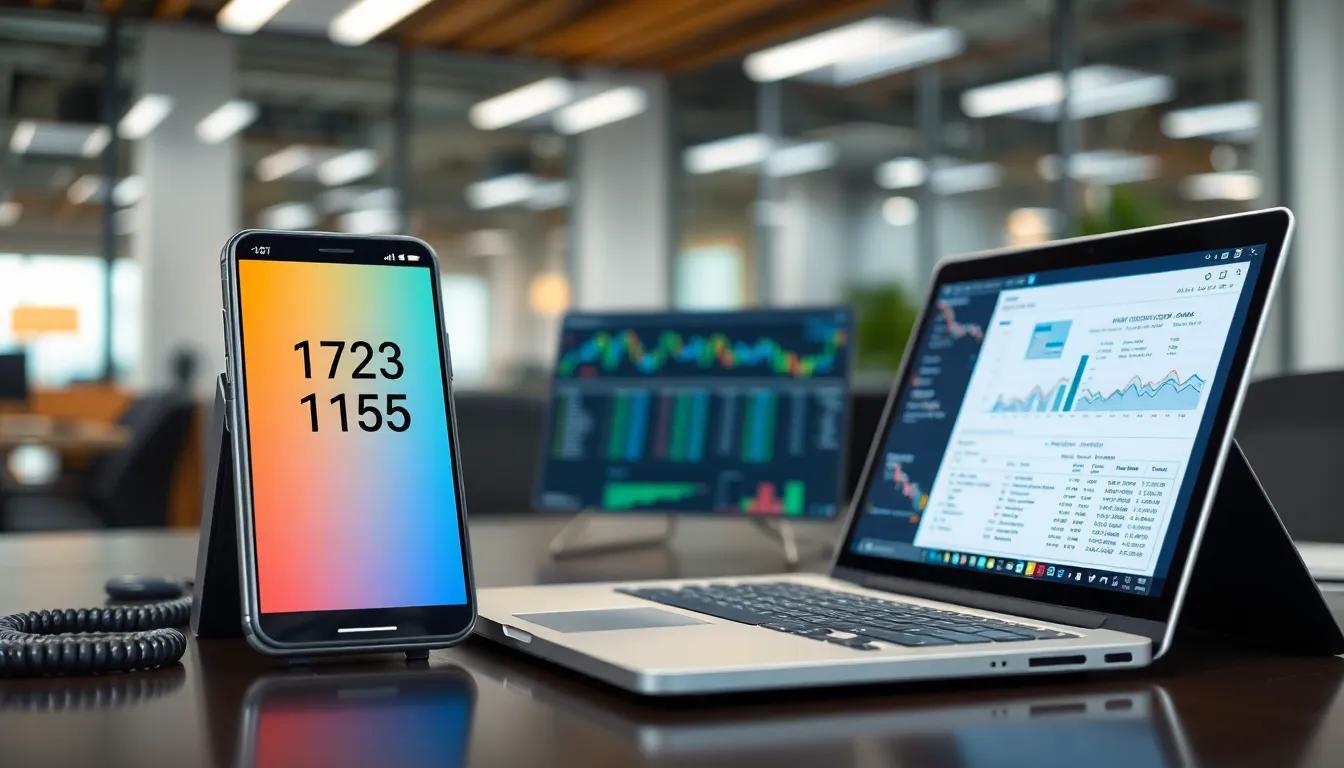In a world buzzing with numbers, few stand out like 2894520101. This seemingly random string might just look like a phone number from a parallel universe, but it holds secrets worth uncovering. If curiosity had a face, it’d probably be peeking at this intriguing figure, ready to dive into the depths of its significance.
Table of Contents
ToggleOverview of 2894520101
The number 2894520101 presents intriguing possibilities that extend beyond its surface. This section explores key aspects and specifications relevant to its significance.
Key Features
Unique characteristics define the number 2894520101. It serves as an identifier, possibly linked to telecommunication systems or data processing applications. Associated formats may vary depending on context, yet its numeric structure maintains consistency. Utilization in specific industries could reveal deeper insights into its operations. Recognition among specialized groups highlights its potential importance.
Specifications
2894520101 adheres to established numerical standards. Structurally, it consists of ten digits, aligning with common phone number formats in the United States. Categories for use can range from business contacts to unique identifiers within databases. Specifications often gauge performance or efficiency metrics in relevant applications. Understanding its operational context may clarify its intended functionalities and relevance in various scenarios.
Pros and Cons

Exploring the implications of 2894520101 reveals both advantages and disadvantages that impact various applications and industries.
Advantages
Understanding 2894520101 can enhance communication efficiencies. This number serves effectively as a unique identifier in telecommunication systems. Various sectors utilize it for maintaining organized databases. Its ten-digit structure aligns with U.S. phone number standards, ensuring familiarity and ease of use. Many businesses leverage its capabilities for streamlined customer interaction. Integration into existing data systems promotes clarity and precision in tracking. Overall, its role as an identifier supports operational effectiveness across multiple platforms.
Disadvantages
Challenges arise in using 2894520101 due to its potential for misidentification. Users may confuse it with similar numbers, leading to communication errors. Anonymity can pose risks in customer interactions, reducing trustworthiness. Furthermore, reliance on this number in systems may lead to vulnerabilities if inadequate security measures are in place. Restrictions in use may hinder flexibility in adapting to new technologies. Overall, balancing these drawbacks is crucial for optimal functionality in its intended roles.
User Experience
User experience associated with 2894520101 encapsulates various facets of performance and customer feedback. Understanding these elements is vital for optimizing interactions.
Performance Review
Performance levels of 2894520101 indicate strong efficiency in context. Various telecommunications systems leverage this number for seamless connectivity. Speed and reliability frequently enhance user satisfaction. Structured identification helps maintain organized databases, reducing errors associated with misidentification. Organizations often report increased operational effectiveness due to streamlined processes. Overall, the ten-digit format facilitates ease of use, correlating positively with efficient communication practices.
Customer Feedback
Customer feedback on 2894520101 demonstrates a mixed yet insightful perspective. Many users appreciate the familiarity of its structure, which simplifies dialing and recognition. Positive comments often highlight efficient communication and responsiveness linked to businesses using this identifier. Some customers, however, express concerns about anonymity affecting trust. Instances of misunderstanding due to similar numbers sometimes arise. All feedback contributes to a broader understanding of its impacts and informs potential enhancements in its utilization.
Comparison with Competitors
This section examines how 2894520101 stands against other identifiers in telecommunications and data applications. Understanding its position can enhance insights into its usability and benefits.
Similar Products
Numerous identifiers exist that share functionality with 2894520101. Common examples include standard U.S. phone numbers and various identification codes used in databases. Each of these identifiers aims to improve communication and organization. Products like VoIP numbers also bear similarity, providing additional channels for customer interactions. Mobile carrier numbers serve similar purposes as unique identifiers, helping manage customer accounts. While alternatives are available, none replicate the specific advantages offered by 2894520101.
Unique Selling Points
2894520101 boasts several unique selling points that distinguish it from competitors. Its ten-digit format aligns with common U.S. standards, promoting easy recognition and use. Enhanced communication efficiency arises from its reliability in telecommunication systems. Users find its familiarity comforting, facilitating smoother customer interactions. Additionally, structured identification reduces the potential for errors, enhancing operational effectiveness. The potential for integration into various industries further solidifies its value, catering to diverse applications beyond telecommunications. These features significantly contribute to its practical appeal in modern communication environments.
2894520101 stands out as more than just a random sequence of digits. Its significance in telecommunications and data processing underscores its role as a reliable identifier. By enhancing communication efficiency and maintaining organized databases, it proves valuable across various industries.
While it offers numerous advantages like ease of use and operational effectiveness, challenges such as potential misidentification and anonymity must be addressed. Understanding the nuances of this number can lead to improved user experiences and better integration into business practices. Ultimately, recognizing its unique characteristics and functionalities can unlock new opportunities for effective communication and data management.




